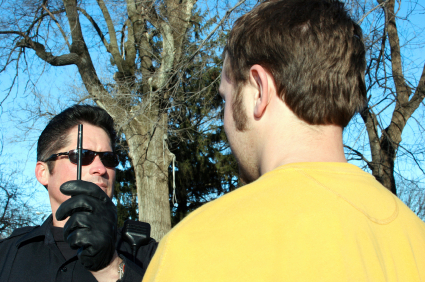During a traffic stop, if a police officer suspects that a driver is intoxicated, he will use special training to assist him in making the decision whether to arrest. The police officer will ask the motorist to participate in field sobriety tests (e.g. FSTs) to determine whether the driver is impaired.
The National Highway Traffic Safety Administration of the federal government has studied field sobriety tests and approved only three for standardization. That is, NHTSA conducted thorough scientific studies to determine which field sobriety tests accurately detected impairment from alcohol and or drugs and found only three that were reliable: the one-legged stand, walk-and-turn, and horizontal gaze nystagmus test. These are the only standardized field sobriety tests (SFSTs).
The one field sobriety test that is considered to be the most accurate of them all is the horizontal gaze nystagmus (HGN).
The HGN test involves the police officer having the driver follow a pen with his eyes. The police officer is looking for specific responses from the eyes that show the driver is under the influence.
Nystagmus is the involuntary rapid movement of an eye either horizontally or vertically. It can be brought on by disease, head trauma, and many other physiological conditions. Alcohol is one of many causes of nystagmus. Nystagmus is involuntary jerking of the eyeball(s).
To conduct the test, the police officer is supposed to check the driver’s eyes to see that the pupils are of equal size and to see that the eye is able to track an object as it is moved side to side at eye level.
Then the police officer will hold a pen or finger approximately 12 inches from the driver’s face at eye level and move it back and forth parallel to the ground in front of the driver.
The police officer is looking for the following three indicators:
- lack of smooth pursuit
- onset of nystagmus before 45 degrees
- distinct nystagmus at maximum deviaiton
Each of the above three indicators counts as one point in the test. The police officer is grading each eye during the test. Therefore, there is a total of six possible points for grading the driver’s impairment in the HGN test.
A total of four points on the test results is considered a fail and indication of impairment.
The HGN test has only recently been accepted by the Illinois Supreme Court. Some county courts allow the HGN to show impairment, and others do not (such as Cook County and Lake County).
The results of the HGN may be excluded from evidence where it is shown that the test was not performed according to standards accepted by NHTSA. The argument would be that the test was not reliable because it was not performed properly. A health condition affecting the eyes such as an astigmatism or lazy eye can cause the results to be inaccurate.
